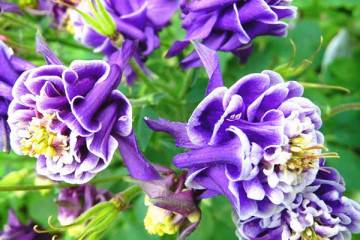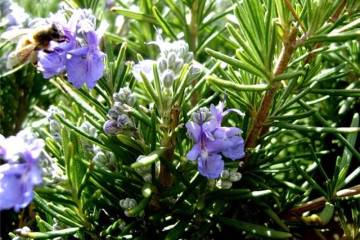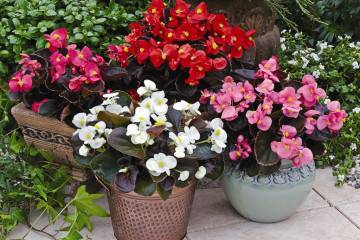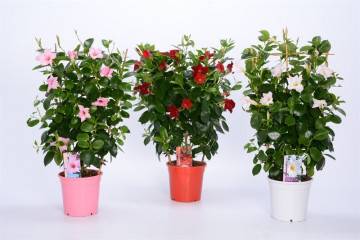Eustoma - cultivation
Each gardener seeks to decorate his site as much as possible with all kinds of flower beds and flower beds. Some even create entire compositions. Today, a huge number of ornamental flowering plants are known. One of them is eustoma; in the garden, growing and caring for it in Siberia raises many questions. For a flower to be pleasing to the eye, it needs to be provided with complete and balanced care. Experienced gardeners shared their tricks: how to grow eustoma and how to properly care for it.
Eustoma - growing in the garden
Eustoma is a beautiful flowering plant that is most often grown in a garden in flower beds or flower beds, but sometimes it can also be found at home. The second name for this flower is lisianthus or Irish rose. A huge number of shades and varieties have made this flower popular among gardeners and landscape designers.
The height of the flower reaches 60-90 cm. The stem is dense and juicy. A mature, mature plant resembles a bush. At the top of this bush, inflorescences flaunt, resembling small roses from afar. The diameter of the flower most often reaches 7-8 cm. The color of the flower is:
- blue;
- pink;
- yellow;
- white.
Up to 40 flowers can bloom on one bush at the same time.
Low-growing varieties will perfectly decorate flower beds or border areas. Tall varieties are suitable for cutting. Flowers stand for a long time, which is why they deserve special love among florists and landscape designers when creating flower arrangements.
Transplanting eustoma into open ground in the country
Seedlings are grown initially at home, and after it has been strengthened and comfortable weather has been established, they are planted in open ground.
The optimal period for planting seedlings in open ground in the country is the first week of July. By this time, the earth has time to warm up enough, and the warm rays of the sun contribute to the rapid and active development of the flower. In addition, it is by the middle of the summer season that the seedlings are strengthened and ready for life in the open air. Flowering begins 3-4 months after the first shoots. Some summer residents grow eustoma in several stages. So some flowers replace others and are pleasing to the eye throughout the season.
The depth of the hole should be such that the flower stays at about the same level as in the pot.
What you need to plant eustoma
Growing and caring for eustoma outdoors requires special knowledge and experience. In order for the flower to actively grow and develop, it must be provided with the most comfortable conditions.
The first time after transplanting, it is better to cover the flowers with a plastic bottle or special film. This will protect against the cold at night and promote early establishment. Such measures are effective for the first three weeks. Then you can refuse to cover.
To minimize the risk of plant death at the beginning of summer, seedlings are taken out under the open sky for hardening, and immediately after transplanting, watering is reduced to a minimum. A couple of weeks after planting, you can return to standard watering and flower maintenance.
Choosing the best place
Eustoma is a light-loving plant.Under the rays of the sun, she is able to maximize her beauty. However, it is better to protect it from the scorching midday sun. It is also necessary to ensure that there are no objects and surfaces nearby that will reflect the rays on the flower. Penumbra is ideal.
It is not recommended to plant flowers under the canopy. Rainwater dripping from the roof will severely soak the soil and damage fragile roots and leaves.
Eustoma does not tolerate drafts. Better to pick up closed areas on the west side.
Step-by-step planting process
Before planting, you need to make sure the quality of the garden soil. The soil should be neutral acidity, namely - pH in the range from 5 to 7. For testing, you can use a special litmus paper. If the soil is acidic or alkaline, it is recommended to purchase a universal soil for flowering plants at a flower shop or prepare it yourself. This will require the following ingredients:
- peat soil;
- garden land;
- rotted humus;
- river sand.
The components are mixed in a 2: 1: 1: 1 ratio.
It is necessary to prepare holes for the future flower bed. The depth of the prepared hole should be about the same as in the pot. The distance between the holes is about 20 cm. It is recommended to lay a drainage layer on the bottom. For this, sand or pebbles are suitable. Drainage will prevent water from stagnating when watering.
Additionally, it is necessary to control the remoteness of the landing zone from underwater waters.
Transplanting the tuber is best in the evening. To do this, a clod of earth is soaked and carefully moved into open ground. Empty places are filled with earth and the flower is watered. The top layer must be gently loosened for additional aeration.
Reproduction of eustoma
As you know, the reproduction of flowers is possible in three ways: by cuttings, dividing the bush and seeds. In relation to Lisianthus, such a method as dividing the bush is not applied. The root system of the flower is so fragile that it is more likely to be injured and the plant will die.
Propagation by cuttings
As in the case of dividing the bush, propagation by cuttings is also impossible. Eustoma cuttings do not take root.
At first glance, it may seem so, however, after a while the stalk will die without rooting.
Growing from seeds
Breeding seedlings is the only sure way to see an ornamental flowering plant in your garden. It is necessary to prepare for the fact that growing eustoma from seeds is a rather complicated and time-consuming process, but the result will exceed all expectations.
Seeds are sown in late February or early March. A previously prepared and disinfected soil is poured into a shallow container. It is moistened and seeds are sown on top. The container is covered with foil, creating a greenhouse environment. As the soil dries up, it is moistened with a spray bottle.
The soil should be light and breathable. The optimum temperature for rapid growth is 18-20 degrees.
The first shoots appear after a couple of weeks. When 3-4 leaves appear on the flowers, they can be dived. 3-4 months after sowing the seeds, lisianthus begins to bloom.
Eustoma care
Having provided full and competent care for this ornamental plant, a bright and juicy flower bed will always flaunt in the garden. The first thing to look at is the soil. Weeds must be removed in a timely manner. The flowerbed will look neat, and useful substances will also remain in the ground.Also, it must be loosened regularly. It must be remembered that the actions must be gentle and accurate, because the flower has a fragile root system.
Watering mode
Eustoma calmly tolerates heat and drought, but during such periods it is better to water it. Excessive waterlogging is dangerous for the delicate root system. You can determine the regularity of soil moisture as the top layer dries. As soon as the gardener notes drying out, it is necessary to take care of watering. Water is poured under the flower, closer to the roots. Falling water on leaves in cool weather is destructive. Because of this, fungal diseases can begin to develop. It is for this reason that it is forbidden to spray eustoma.
Top dressing
Eustoma needs regular feeding. A couple of weeks after transplanting seedlings into open ground, you can think about how to feed the eustoma. For this, the most common mineral complex is used. Before the beginning of flowering, namely during the period of active development and emergence of buds, top dressing is applied once every 2 weeks.
Features of care during the flowering period
During the flowering period of the Japanese rose, special care of the flower is required. The gardener will need to water the plant more often than usual. In this case, spraying is also prohibited. All water is poured strictly at the root, avoiding stagnation. You should also remove nitrogen-rich fertilizers. To extend the flowering period, it is recommended to opt for potash and phosphorus supplements.
The gardener does not have to think about why he has few inflorescences, as well as the flowering period.
Features of care during the rest period
This flower is most often grown as an annual, but if the gardener plans to admire the flowering for several years in a row. Long-term planting of eustoma requires quality rest. Leaving the culture on the street for the winter, the flower is cut and covered. If the eustoma was grown in a pot, then for the dormant period it must be kept at a temperature of 10-15 degrees. At the same time, watering is reduced as much as possible, but does not allow drying out. Top dressing for the rest period is completely stopped.
Preparing for winter
With the arrival of the first cold weather and frost, the Japanese rose left in the garden immediately dies. However, the gardener can cut the bush, leaving 3-4 internodes, and then next season the perennial will bloom and develop with renewed vigor. All that is required from the gardener is shelter. To do this, sprinkle the ground with mulch, and cover the bush with spunbond on top.
If the gardener is afraid of irrevocably losing a beautiful flower, then it can be dug up and moved to a closed balcony in a pot for wintering. In this case, it is recommended to process the soil and flower in order to avoid contamination of indoor plants. But even with such care, the flower will have to say goodbye in 4-5 years. During this time, the flowers lose their strength: fewer and fewer buds and more greenery are born on them.
Features of growing and caring for eustoma in Siberia
The Siberian climate is harsh. It is quite difficult to grow flowers in it, but if you follow some recommendations, it is possible. If eustoma is planted in the Urals, the cultivation is somewhat different. Experienced gardeners start growing seedlings much earlier than in other regions. Planting and caring for eustoma here begins in the fall. The technology of care and the plan of the procedure does not differ from the standard ones. The only difficulty that the inhabitants of Siberia may encounter is the short daylight hours. Therefore, in the homes of avid summer residents, you can see special phytolamps. The recommended daylight hours are 12-14 hours. The picking of seedlings is carried out after the appearance of the second leaf.
After the pick, an adaptation period follows, which lasts 3 weeks. Then add the earth to the first leaves. A transplant into open ground is carried out when warm weather is established. The procedure is carried out by the transshipment method. Caring for Lisianthus for the period of life in the garden remains the same as in the neighboring regions.
Having familiarized themselves with the basic rules of plant care, the gardener will be able to provide balanced and rational care for a bright flower bed. It should be additionally taken into account that for some varieties of eustoma, separate recommendations must be followed.























